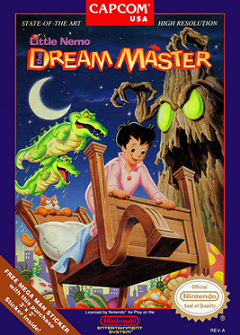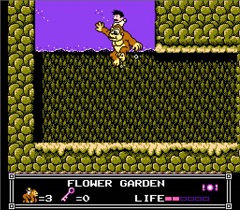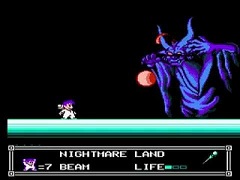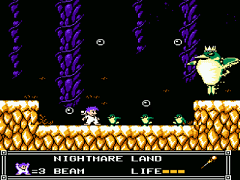 \\
\\Little Nemo - The Dream Master
During the 1980s, Capcom released a lot of games for the NES. We saw stuff like Bionic Commando, Strider, legions of Mega Man games, and various Disney-themed games. A somewhat more unusual and unexpected licensed release to come out during all of this was Little Nemo – The Dream Master.This was based on a movie that was coming out at the time, which in and of itself was quite the unexpected film. To add some context, Little Nemo was a comic strip that was originally published in the very early 20th century (1905-1926 to be exact). The comic followed the adventures of Nemo during his time in Slumberland. There his dreams were reality and all manner of hijinks would ensue. It had its time in the sun and ran its course. One would think that the comic would have been relegated to being an interesting bit of historical trivia. However, Japanese producer Yukata Fujioka became obsessed with creating an animated film based on it in the 1970s.
He spent the next several years travelling America in search of help. Fujioka talked with everyone from George Lucas to Chuck Jones. However, they were not interested for various reasons. Finally, in 1982 he gained full rights to making a film and got started. This began a cross-Pacific effort to get the thing off the ground as it was handled by studios both in Japan and the US. During this time, people like Hayao Miyazaki and Isao Takahata were involved with project for a short period. They both departed eventually, citing creative differences with Fujioka.
Years would pass before the movie would be completed, with it finally entering Japanese theatres in 1989. Ultimately, the movie bombed, losing a ton of money in the process. It wasn’t necessarily a bad movie. In fact, it’s pretty decent. Unfortunately, in Japan it released at the same time as Kiki’s Delivery Service and just couldn’t cope with that kind of competition as Studio Ghibli’s film went on to dominate the box offices there over the summer. Meanwhile, when it was released in America in 1992, it only hit a little over 500 theatres with not much fanfare. Many didn’t even know that it existed. As a result, the movie never really got off the ground and was a financial failure.
This is unfortunate, as the NES game based on Little Nemo is really quite good. It was a platformer. Given that the story was based on a boy’s dreams, it left the door wide open for the game to be imaginative with its settings. It hopped between what would have seemed like a disparate mish-mash of locales in any other situation, but work quite well in the random realms one’s dreams tend to take them.
The premise of the game was that the ruler of Slumberland had been kidnapped by the Nightmare King. It thus fell on Nemo to rescue King Morpheus. With that, players would navigate a number of worlds. These ranged from forests to cloud ruins to an upside-down house to Nightmare Land itself. In each stage, players would need to hunt down six keys, which would be needed in order to unlock the door at the end of the level.
Nemo’s primary weapon for much of the game would be a never-ending supply of candy. He can throw it at enemies in order to stun them briefly. This allows him to get past them and run to safety. The treats served an additional purpose in that it could be fed to some of the wildlife scattered throughout each stage. Upon giving three to a given creature, it would fall asleep. If the player ran Nemo overtop of it, he would hop in the animal and be able to use it.
Each creature had its own unique strengths and weaknesses. For example, the frog could jump very high. Moreover, it used jump attacks to kill enemies, but its walking speed was very slow. Meanwhile, moles could dig underground, providing access to hidden areas of a stage, but they couldn’t jump. In the case of Gorillas, they could punch baddies, had a ton of hit points, and could climb trees, but were very slow. Anyway, you get the picture. There were a number of these beasts throughout each level. They all served a purpose in helping Nemo get around and gather the items he would need.
At its core, Little Nemo – The Dream Master has a lot of traditional platforming conventions to it, but Capcom managed to dress it up with some interesting features and a healthy dose of imagination, helping to make the experience all the more special. Most people seem to have spent most of their time playing the likes of Duck Tales and Chip and Dales’ Rescue Rangers during this period. However, Little Nemo is also very much worthy of one’s attention when it comes to 8-bit platformers developed by Capcom.
- IroIro
April 16, 2019
Publisher: Capcom
Genre: Platformer
Platform: NES
Released: 1990

NES Cover Art

The gorilla is quite strong

Final boss of Little Nemo

Beware the subterranean penguins

Little Nemo is yet another 8-bit game with giant mushrooms